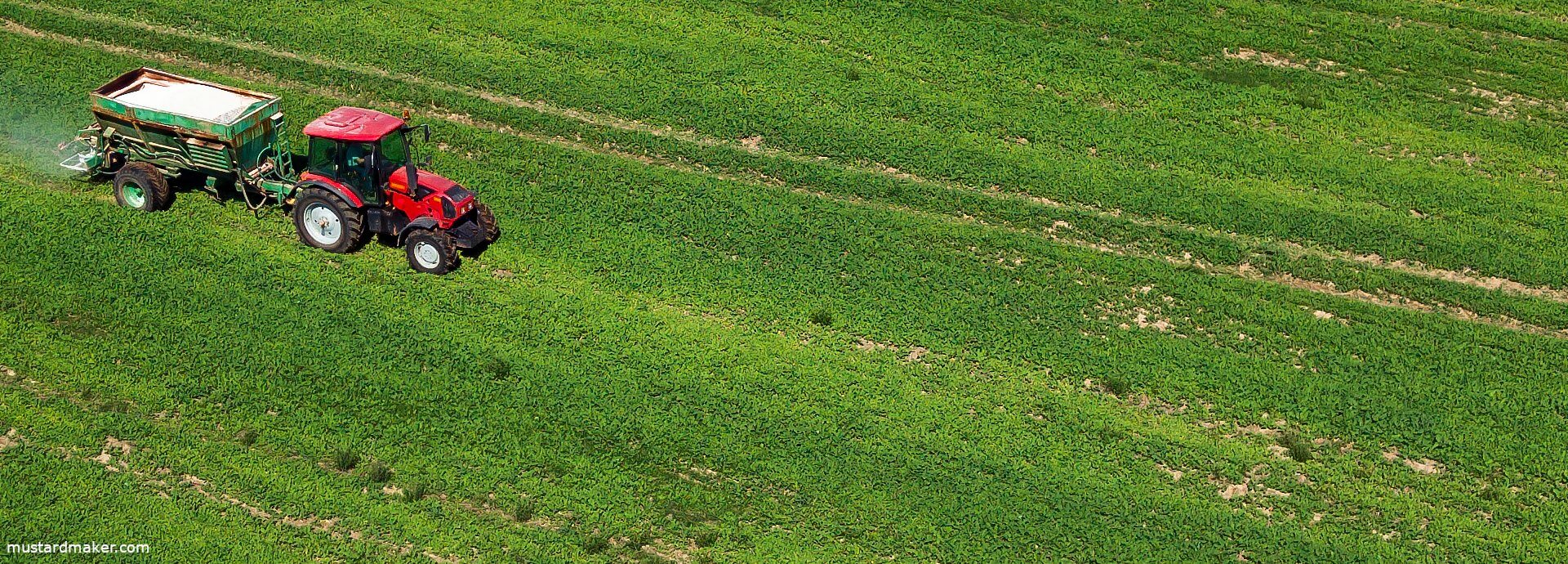The mustard plant
Originally, the mustard plant comes from India. During historical excavations were found cultivation remains of mustard from the time 1800 BC. To Europe, especially to Rome, mustard came in the year 100 A.D. From this time a mustard recipe has been preserved. Mustard is therefore older than pepper or chili and, together with horseradish, is one of the first hot spices in Europe.

Table of Contents
Today there are about 30 species of mustard, which belong to the genus Brassicaceae (cruciferous plants). Therefore, the mustard plant is related to kale, Brussels sprouts and broccoli. Black mustard (Brassica nigra) and brown mustard, sareptasenf or rutabaga (Brassica juncea) but also white mustard (Brassica alba) are used for mustard production. In addition, mustard is made from yellow mustard (Sinapis alba).
What does a mustard plant look like?
Mustard is often confused with rapeseed. Just like rapeseed, mustard forms an angular, upward-branching stem with rough, ovate stalked leaves and a yellow flower with four petals and six stamens.
But what is the difference between rapeseed and the mustard plant?
Mustard plant flowering period extends from late summer to autumn. It competes with the variegation of the trees. But the yellow rape fields bloom already in the spring. Each mustard flower of brassica is hermaphroditic. It pollinates itself by the wind or by insects. The mustard plant is a rich bee pasture for bees. It gives nectar and pollen, the latter being the main benefit for bees.
How does the mustard benefit the bees?
They use it, when other flowers have already faded, to feed their winter brood and build up a supply. White mustard Sinapis Alba depends on pollination by bees. The insects double the yield achieved by wind pollination alone. The mustard seeds mature in pods. Between 4 – 15 mustard seeds are formed per pod, depending on the mustard variety.
The main types of mustard
- White mustard (Sinapis alba) is commonly called yellow mustard. The stem of the plant is hairy and the bright yellow mustard flowers smell a little like vanilla. The beak-shaped pods are 4.5 cm long. There are 4-8 seeds in each pod. Yellow mustard has a mild flavor. From white/yellow mustard, the mustard seeds and young leaves are used.
- Brown mustard (Brassica Juncea), also Rutenkohl, Romanian mustard and Sareptasenf is characterized as Indian mustard or Chinese mustard. The plant, like all mustard species, is an annual and the pale yellow mustard flowers, arranged in clusters, form slender, brown pods about 4.5 cm long. The mustard seeds are also chocolate brown to reddish brown in color. The mustard seeds and the young leaves are used. The mustard seeds have an antibiotic, warming and stimulating effect. The young leaves are enjoyed as a vegetable and salad. Mustard seeds of brown mustard are suitable for growing as mustard in a sprouting jar.
- Black mustard (Brassica nigra) is sometimes called “mustard cabbage”. A black mustard plant grows strongly branched and the pinnate leaves can grow up to 15 cm long. The bright yellow mustard flowers develop into square pods. Each pod contains 4-10 dark brown to black seeds, which are the smallest and most pungent of all mustards. The mustard seeds, the young leaves and the flowers are used. The cultivation of black mustard is not worthwhile by machine, because the pods are very close to the stem. You can recognize the mustard species by its conspicuous hairless stem.
How big does a mustard plant grow?
The size of the mustard plant depends on the variety of mustard. Black mustard can grow up to two meters high. White mustard reaches a height of 30 cm to 70 cm and brown mustard reaches 120 cm.
Where does the mustard plant grow?
Cultivation areas of the mustard plant are temperate climates from Eurasia to the USA and Argentina, because the mustard plant needs a short but warm summer. Recently, mustard has also been cultivated again in Central Europe and grows as a wild mustard weed.

Where is mustard currently grown?
The main areas of industrial mustard cultivation are France, Canada, Finland and the Netherlands. Mustard can be grown in almost any garden, even as a green manure. Mustard is an undemanding plant that does not require additional fertilization in a nutrient-rich location throughout the growing season. The soil for mustard plants should be calcareous and humus. Mustard is an annual, not hardy.
The mustard plant as fertilizer?
Yes, because when rotting on the bed or in the compost, the stored nutrients are released back into the soil. Therefore, mustard is suitable as a green manure, because the root leaves a loosened, fine-crumb soil and the plant parts rot as humus when turned over. Mustard can be grown in mixed culture with almost all other vegetables, just not related to broccoli, cauliflower and other cruciferous vegetables. Cultivation with cress, radish or radish should be avoided and also only after 4 years again in the same location to avoid diseases.